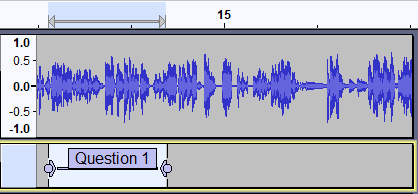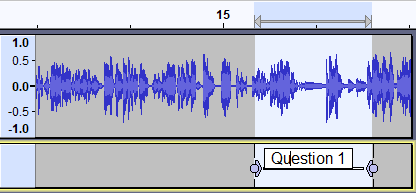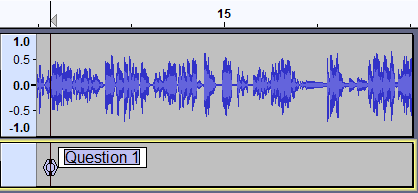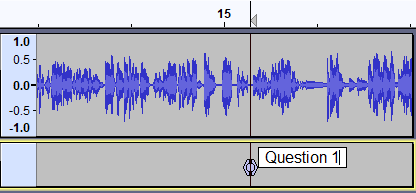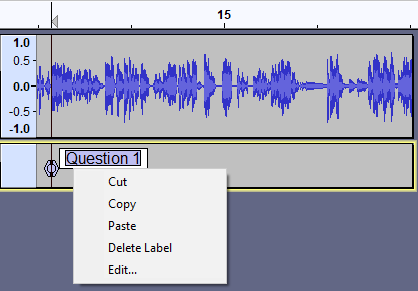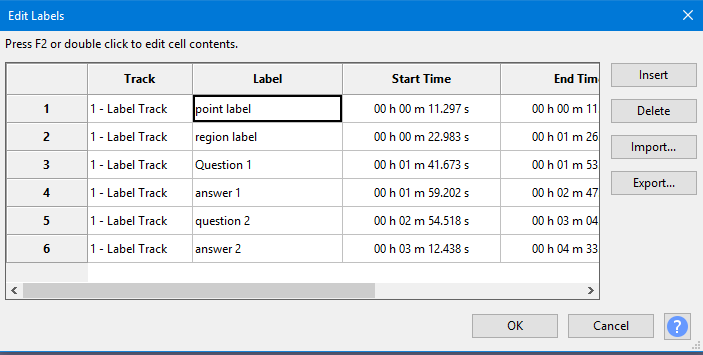Editing, resizing and moving Labels
Contents
- Changing the length and position of labels with the mouse
- Moving a point label
- Expanding a point label
- Resizing and moving a region label
- Adjusting the junction point where two labels meet
- Moving a label when there is a selection
- Using cut, copy and paste
- Using the Context Menu
- Using the Labels Editor
Changing the length and position of labels with the mouse
Point label
- You can move a point label by clicking and dragging its circle handle.
- You can turn a point label into a region label by clicking and dragging either of its chevron handles.
| You can also move a point label by holding the Shift key down while clicking and dragging the circle or either of its chevron handles. Using this shift-modified click&drag with a point label avoids any risk of accidentally creating a region label. |
Region label
- You can change the length of a region label by clicking and dragging its circle or either of its chevron handles.
- You can move a region label by holding the Shift key while clicking and dragging its circle or either of its chevron handles.
- In the case where two region labels meet you can adjust the junction point where they meet by clicking and dragging their shared circle handle.
Moving a point label
You can move a point label by clicking and dragging its circle handle:
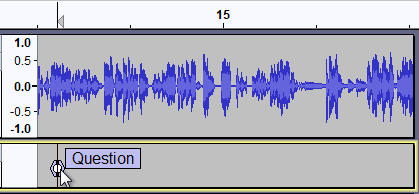

Before After
| You can also move a point label by holding the Shift key down while clicking and dragging the circle or either of its chevron handles. This avoids any risk of accidentally creating a region label. |
Take care when moving point labels
Be very careful when moving a point label not to accidentally click on a chevron and thereby expand the point label to a very short region label.
This can cause unwanted consequences when using Export Multiple, exporting a short audio file based on the short region label.
There is a slight visual cue to distinguish between a point label and a region label too short to display at the current zoom level.
The region in the label track never collapses down to a single line, rather there is always a line for each edge of the region resulting in a double line, slightly visibly thicker:

- Region label of 512 samples selected - note thin white selection line visible in the waveform
| With a compacted region label like this if you click on the circle the label will collapse to a point label. |
Expanding a point label
You can expand a point label into a region label by clicking and dragging either of its chevron handles:
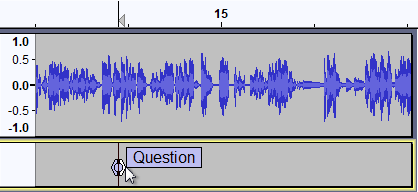
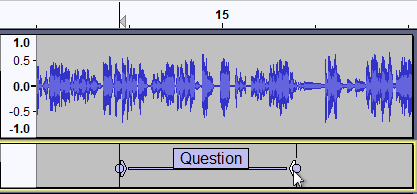
Before After
Resizing and moving a region label
Resizing
You can change the length of a region label by clicking and dragging its circle or either of its chevron handles:
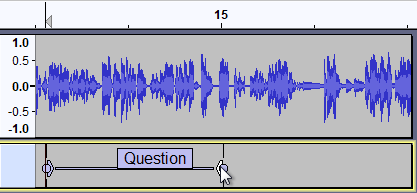
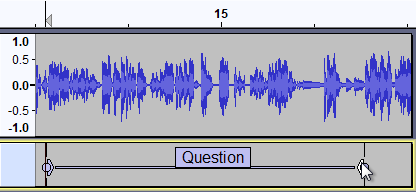
Before After
Moving
You can move a region label by holding the Shift key while clicking and dragging its circle or either of its chevron handles:
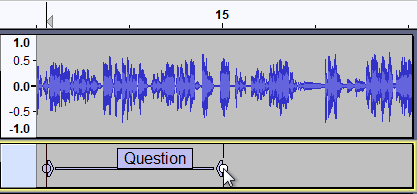
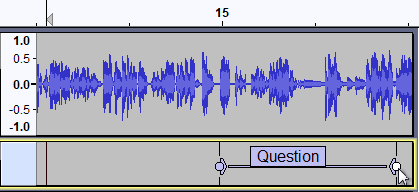
Before After
Adjusting the junction point where two labels meet
You can adjust the junction point where two labels meet by clicking and dragging their shared circle handle:

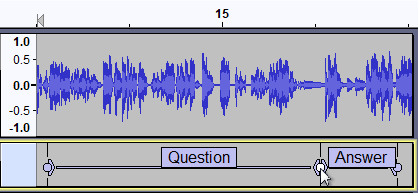
Before After
Moving a label when there is a selection
The illustration below shows what happens if you click in a label to select it, press Enter, then move the label.
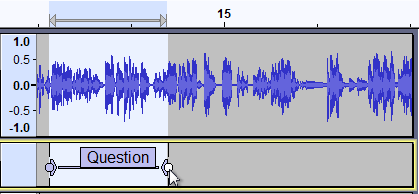
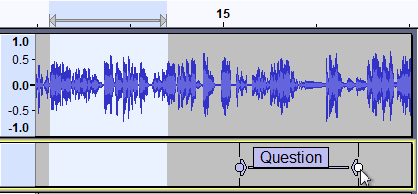
Before moving a label with a selection After moving a label with a selection
Contrast this to what happens if you click in a label to select it, then move the label.

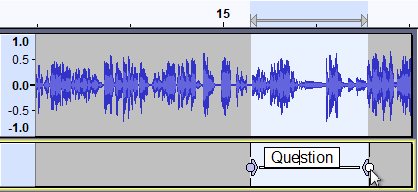
Before moving a label when the label is selected After moving a label when the label is selected
Using cut, copy and paste
Cutting and Pasting Region Labels
You can cut and paste region labels using and , but you have to make sure you do not select any audio, or you will end up cutting and pasting audio where you probably did not intend.
In the image below, the label was selected by clicking in it, then the audio track was unselected by Ctrl-clicking in the Track Control Panel's button of the audio track (this can also be done with the keyboard by Enter, Up then Enter).The label was then cut to the clipboard with :
To paste the label at a different point in the audio track, either
- click in the label track at the point where you would like the label to begin, or
- click in the audio track at the point where you would like the label to begin then Shift + Down-arrow to extend the selection to the label track.
The label can then be pasted to that spot using .
Cutting and Pasting Point Labels
To cut and paste a point label to a different location, first select the text of the label as shown below. Note the difference in appearance of selected label text (the text is highlighted separately from the box) versus a selected label (where the entire label box is highlighted).
- Do (shortcut Ctrl + X) - the text of the label is cut to the clipboard, leaving a label with no text.
- Press Delete to delete the label, or right-click in the label and choose from the context menu.
- Click in the new location for the label and do .
Using the Context Menu
If you right-click on a label, the label's context menu will appear:
The context menu offers the following options
- Cut: - cuts any selected text in the label and place it on the clipboard
- Copy: - copies any selected text in the label and place it on the clipboard
- Paste: - pastes the contents of the clipboard to the label
- Delete Label: - deletes the entire label
- Edit: - opens the Labels Editor with just the current label
Using the Labels Editor
The Labels Editor lets you add or remove Label Tracks and edit their labels entirely using the keyboard, so is particularly useful for visually impaired users.
launches a keyboard-accessible Labels Editor. This shows all the labels at once in a tabular view, similar to a spreadsheet. Each row represents a single individual label:
